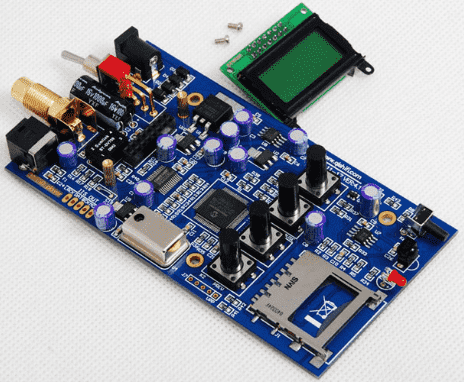About us
FASTPCBA Co.,Ltd
-
 Building 1, Senyang Electronic Technology Park, Guangming High-tech Park, Yutang Street, Guangming District, Shenzhen City.
Building 1, Senyang Electronic Technology Park, Guangming High-tech Park, Yutang Street, Guangming District, Shenzhen City.
-
 F:86-13418481618
F:86-13418481618
-
 pcba13@fastpcba.cn
pcba13@fastpcba.cn
 date:2019-06-24 15:53:00
date:2019-06-24 15:53:00
SMC/SMD welding characteristics and precautions should pay attention in installation design
In SMA wave soldering, the solder wave generator in the wave soldering equipment must be technically updated to meet the needs of SMA wave soldering. The SMA wave soldering craft has both the common aspects of the traditional THT wave soldering craft and its special features. For components, the biggest difference is that SMA wave soldering is an immersion method. This immersion wave soldering craft brings the following new problems. FASTPCBA SMT processing factory will share with you.

Soldering characteristics of SMC/SMD. For the welding of various types of SMC/SMD, refer to the relevant product technical manual. For example, the heat resistance of the carbon film or the metal film resistor is good, and it is ensured that the circuit alloy is not subjected to the etching on the lead terminal, and is well adapted to various welding methods (wave soldering and reflow soldering). Ceramic capacitors can not be subjected to rapid heat, quenching and local heating. Therefore, it is necessary to preheat in the welding, and slowly cool after welding. The wave soldering temperature is controlled at 240 ~ 250 ° C, and the time is 3 ~ 4s. Standard conditions for wave soldering of sea film capacitors: preheating temperature ≤ 150 ° C, time < 3 min; soldering temperature ≤ 250 ° C, time < 5 min; 2 min slow cooling time after soldering. Standard conditions for semiconductor tube wave soldering: preheating temperature is 130-150 ° C, time is 1 ~ 3 min; soldering temperature is 240 ~ 260 ° C, time is 3 ~ 10S; after welding to maintain a slow cooling time of 2 min. SOP-IC standard wave soldering conditions: preheating temperature <150 ° C, time 1 ~ 3min; welding temperature <260 ° C, time is 3 ~ 4s.
Selection of adhesive glue. For the SMA wave soldering adhesive glue.It must be considered that due to the heat generated by the adhesive glue in the wave solder, If this gas cannot be removed and stayed near the solder joint, it will hinder the contact of the liquid solder with the surface of the base metal. Or the adhesive glue is glued to the pad of the PCB, causing the solder joint to be empty welded or dropped. Therefore, the adhesive glue used must be able to withstand the thermal shock during soldering and have sufficient adhesive force at high temperatures, and No gas is produced after immersion in the wave solder. In addition, the melting and preheating conditions should be properly controlled, which also has a significant effect on reducing the amount of gas generated during wave soldering.
The adhesive glue commonly used in SMA wave soldering is divided into UV glue and general glue according to different curing methods. UV glue is usually cured by ultraviolet light, generally without adding a hardener. The adhesiveness is closely related to the temperature of the heat rise temperature. Usually, the temperature is 2 ° C / S, the preheating temperature is generally below 180 ° C, the time is 2.5 ~ 3 min. General glue does not add hardener, commonly known as red plastic. In terms of temperature control, it is slightly different from UV glue. The temperature rise is 2 °C / S, the preheating temperature is below 170 ° C, and the time is 2.5 ~ 3 min.
 Building 1, Senyang Electronic Technology Park, Guangming High-tech Park, Yutang Street, Guangming District, Shenzhen City.
Building 1, Senyang Electronic Technology Park, Guangming High-tech Park, Yutang Street, Guangming District, Shenzhen City.
 F:86-13418481618
F:86-13418481618
 pcba13@fastpcba.cn
pcba13@fastpcba.cn